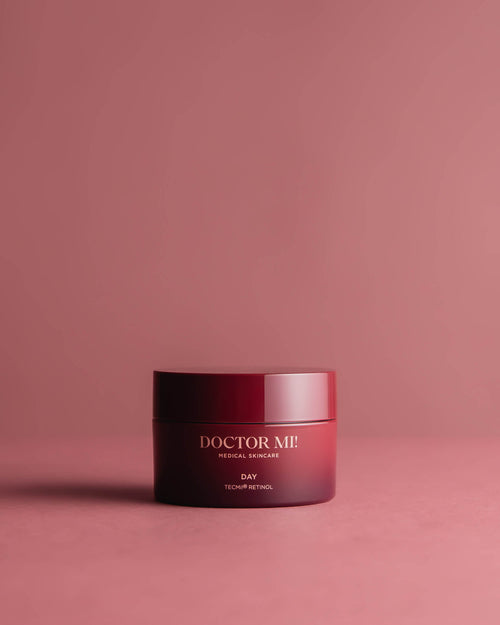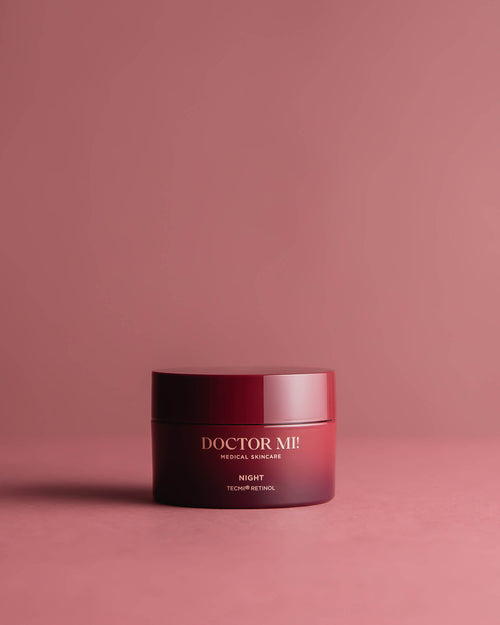It is well known that sugar is bad for teeth, a figure killer, and also promotes diabetes. But few people know that too much sugar also harms the skin and is one of the main causes of premature skin aging, acne, rosacea, and eczema. The destructive biochemical process in which your skin slowly becomes glycated is called glycation. In this article, you will learn everything you need to know about the glycation of the skin – and tips on how to avoid it and even reverse its effects.

GOODBYE TENSION: HOW THE WRONG DIET DAMAGES YOUR SKIN
Collagen and elastin are two structural proteins that ensure the skin is wrinkle-free. In your youth, your body produces more of them than it needs. However, around the age of 30, these anti-aging substances become increasingly scarce. Your skin loses firmness, develops fine lines, and eventually wrinkles.
This condition is promoted by various factors: a lot of stress, dUV radiation, alcohol, nicotine, too little sleep, and an unhealthy diet are true accelerators of skin aging. When unhealthy diet is mentioned, it mainly refers to too many saturated fatty acids and too many simple and double sugar molecules in the form of
- Fruit sugar (Fructose)
- Grape sugar (Glucose)
- Milk sugar (Lactose)
- Simple sugar (Galactose)
- and household sugar (sucrose) meant.
In addition, saturated fatty acids, such as those from fatty meat and processed products, harm the body and thus also the skin. Similarly, household sugar in gummy bears, sodas, ketchup, and the like reduces skin health.
By the way: Sugar hides on the ingredient list of foods not only behind names like fructose, glucose, and the like, but also behind names like dextrose, malt sugar, corn starch, syrup, and maltose.
GLYCATION: WHAT EXACTLY IS MEANT BY SUGAR COATING?
It is the bogeyman of anti-aging: glycation. The term "glycation" means something like the sugar coating of the skin's tissue fibers. There is an external and an internal sugar coating of the skin. The natural aging process of the skin then proceeds in fast forward due to the intake of sugar molecules and unprotected sunbathing, smoking, or smog.
EXTERNAL GLYCATION
We know external glycation from processes in the kitchen: the brown crust of bread, the crispy roast skin, but also the burnt brown milk are results of glycation caused by intense heat. Burnt milk was also the reason for research by the French biochemist Louis Maillard in 1912, who studied the chemical process of the reaction between protein and fat molecules with sugar molecules. He recognized that these form a non-degradable, long-chain compound and glycate – that is, sugar-coat. However, the findings of the Maillard reaction named after him were limited to food chemistry. In the middle of the last century, it was realized that the same processes also occur in our body – only much more slowly, since lower temperatures prevail in our body. For the external glycation of your skin, there are the three main triggers already mentioned:
- exhaust-polluted air
- Smoke
- the UV radiation of sunlight
INTERNAL GLYCATION
Inner glycation takes place in the bloodstream. Our body produces the sugar molecules needed for metabolic processes and the formation of valuable hyaluronic acid with a minimal intake of sugar. If the blood is supplied with too much sugar in the form of refined industrial sugar, fructose, or other carbohydrates, the blood sugar level rises rapidly because the body cannot excrete all the excess through the kidneys. The body stores the excess sugar molecules and reacts with its own proteins (collagens) and fats (lipids) without enzyme involvement. In this process, the sugar molecules attach to the protein and fat cells and bind irreversibly with them. This process is called glycation or sugar coating. The sugar-protein compounds created in this way are called AGEs ("Advanced Glycation End products").
SUGAR COATING: SKIN IN EMERGENCY
AGEs bind to the RAGE. This acronym stands for "Receptor for AGE." These are specialized cells that respond to danger with inflammation and are put into a permanent emergency state by the AGEs, which severely stresses the skin cells. AGEs can also cause the formation of free radicals, which further damage the skin and again stimulate RAGE production, creating a vicious cycle of inflammation and cell damage that causes the skin to age even faster.
WHAT EXACTLY HAPPENS DURING GLYCATION WITH THE SKIN?
The AGEs formed by the glycation of the skin cause the skin and connective tissue to harden through adhesion, and they lose their ability for healthy cell renewal. The body can no longer independently compensate for fine lines and wrinkles due to the rigid connections; they remain visible. Due to damage to the structural proteins collagen and elastin, the skin can hardly retain moisture and can no longer regenerate optimally. In the dried-out and inflexible skin, fine cracks form, providing perfect conditions for inflammation. The skin gradually loses firmness, elasticity, and its natural glow. As a result, those affected appear older, duller, and more fatigued. Initially fine lines eventually develop into wrinkles, and the notorious "sagging" (formation of loose, undefined skin) begins—the visible loss of skin elasticity, noticeable for example with jowls. All this happens much faster than biologically intended: the skin essentially ages at top speed.
CONSEQUENCES OF SUGAR ADDITION
- Loss of tension and elasticity leading to sagging
- Cracks due to hardenings
- Reduced cell regeneration
- Moisture losses
- Thinner skin and dull complexion
- Skin inflammations accompanied by cell damage
- Formation of permanently visible lines and wrinkles
POSSIBLE DISEASES
Not only the skin suffers from the effects of glycation due to excessive sugar consumption: glycation can also clog your arteries and thus cause cardiovascular diseases. Glycation is also a trigger for diabetes; for example, AGE concentrations are found in the eye lenses in cataracts and increasingly in the brains of Alzheimer's patients. Glycation also plays a role in bone loss (osteoporosis), chronic kidney diseases (glomerulosclerosis), and arthritis.
NEVER SUGAR AGAIN? THE AMOUNT MAKES THE DIFFERENCE
Does that mean that fruit sugar in fruit is really harmful to the skin? And isn't the moisture-binding and connective tissue-stabilizing hyaluronic acid also made up of sugar molecules? The answer is: yes and no. Of course, fruit is healthy because its vitamins help the skin. Likewise, our body needs sugar for various metabolic processes, including the formation of polysaccharides and thus also hyaluronic acid. But even here, as is usually the case: it depends on the dosage.
The World Health Organization WHO recommends a maximum sugar amount of 5 percent of the calories you consume daily. For an adult with a "normal" diet, this is, for example, two apples. If you eat only one, you still have room for 100 grams of berries, 200 grams of whole grain rice, and similar, without exceeding the limit at which harmful glycation of your skin begins.
WHAT TO DO ABOUT GLYCATION? THIS IS HOW YOU PROCEED CORRECTLY
To prevent or avoid the glycation of your cells, it is not too late! Below you will learn how to proceed correctly and what to consider in the process.
AT A GLANCE: HOW TO AVOID GLYCATION
- Swear off smoking.
- Drink only a little alcohol.
- Use sunscreen with SPF 50+ daily and year-round (also indoors).
- Support your skin with high-quality and effective skincare.
- Pay attention to your diet.
AVOID CRYSTALLIZATION: HERE'S HOW
To prevent glycation, you should ideally implement the following measures. Basically: consume fruits and juices in moderation, reduce your carbohydrate intake (carbohydrates are also sugars), and avoid sodas and gummy bears as well as sweets in general whenever possible.
Instead, opt for vegetables, salmon, chicken, nuts, green tea, and dark chocolate (in moderation). Also, consuming sugary and protein-rich foods separately helps the body avoid the formation of new AGEs. There are some delicious dishes with little sugar that even have the potential to become your favorite meal.
If you have consumed too many sugary foods, blood sugar-lowering foods can help to neutralize some of it. These include, among others, oat products, onions, leeks, chili, and nuts.
CAN GLYCATION ALSO BE REVERSED?
With effective anti-aging care in the morning and evening, combined with a healthy diet and an appropriate lifestyle, you can make already existing fine lines disappear and stop premature skin aging. Your skin can regenerate, it looks younger and fresher, and regains its firmness. With these simple means, you can pull the chemical emergency brake and age again at a normal or reduced pace. Nice side effect: You prevent many diseases and also do something for your figure!





